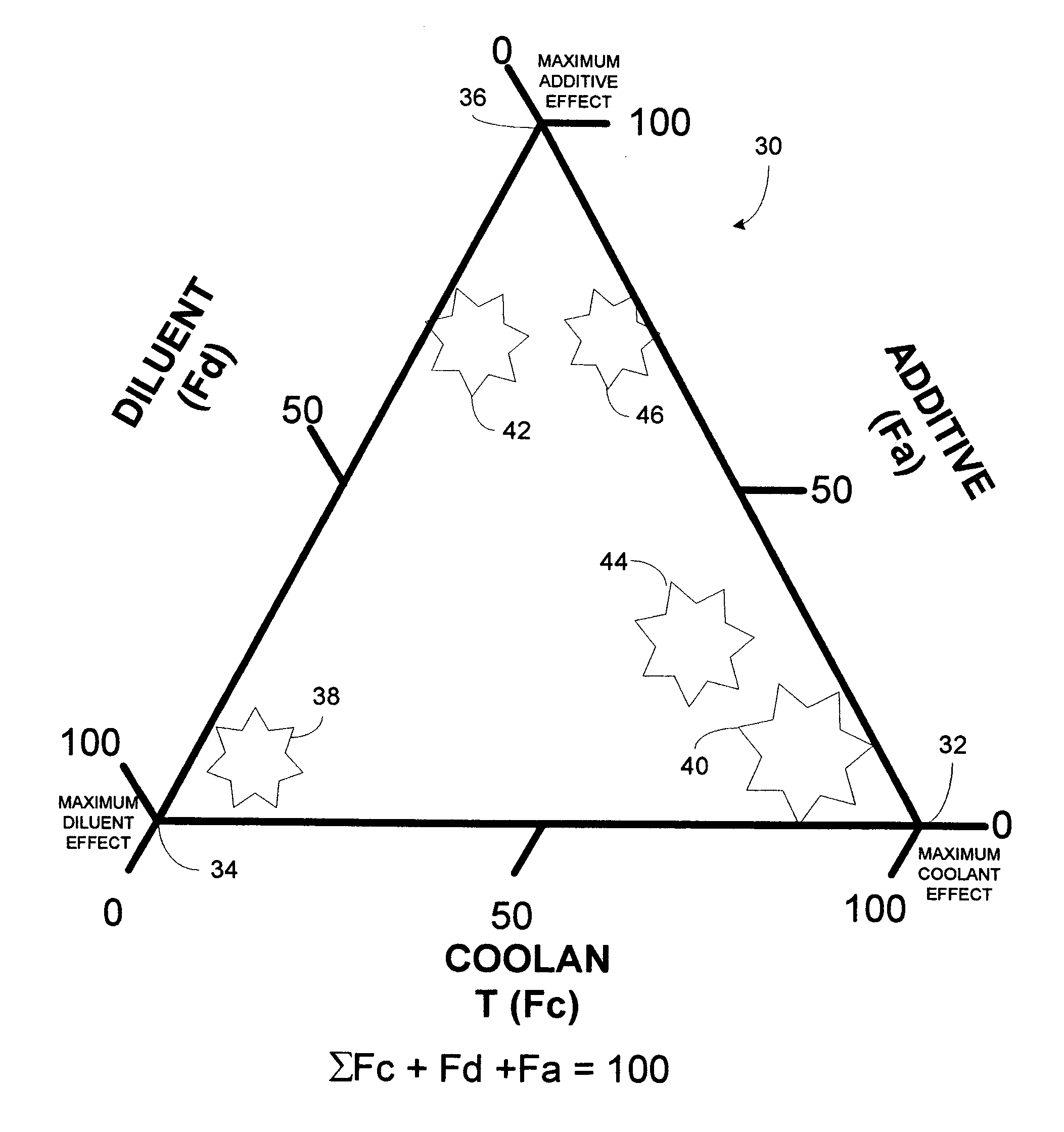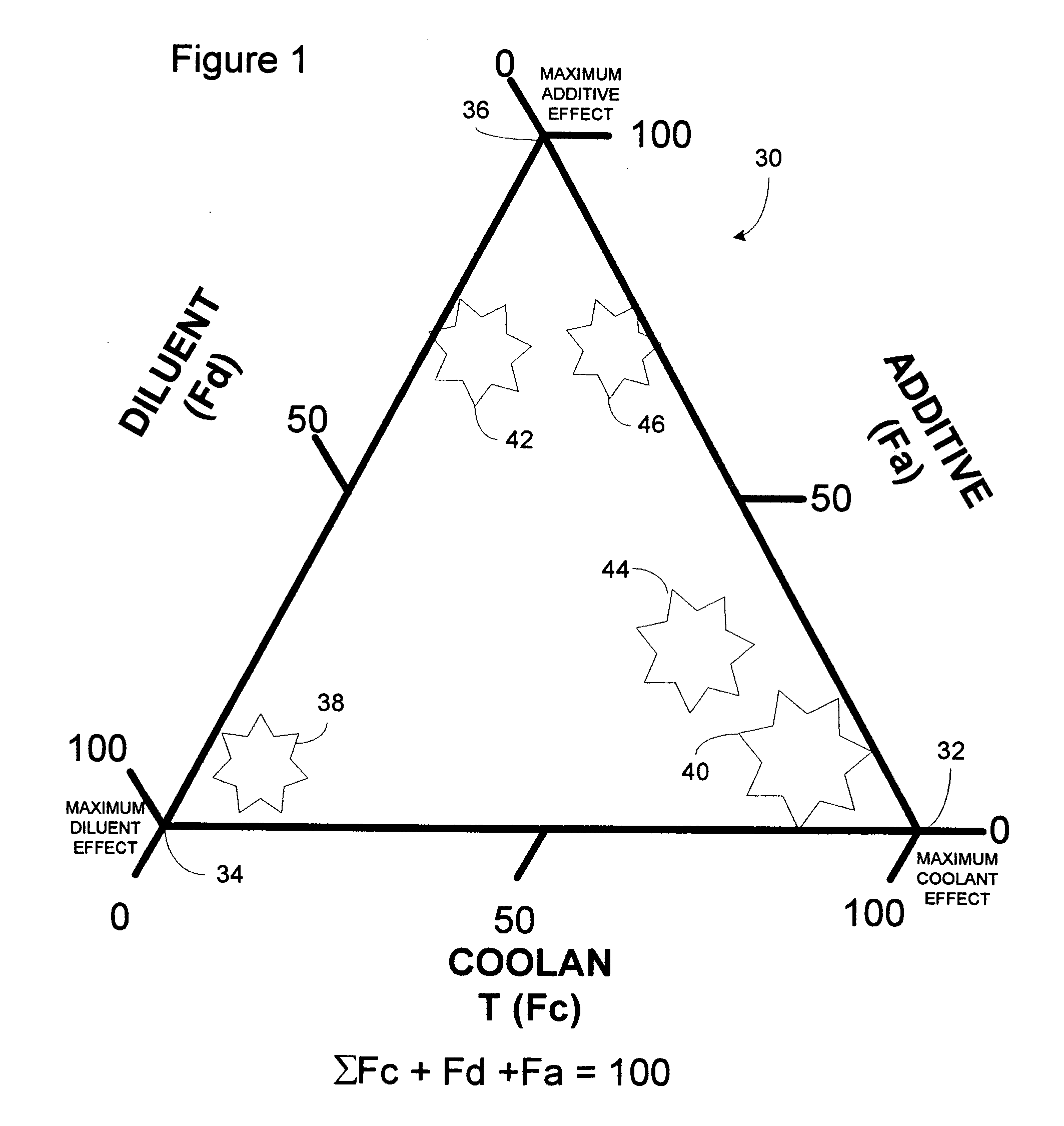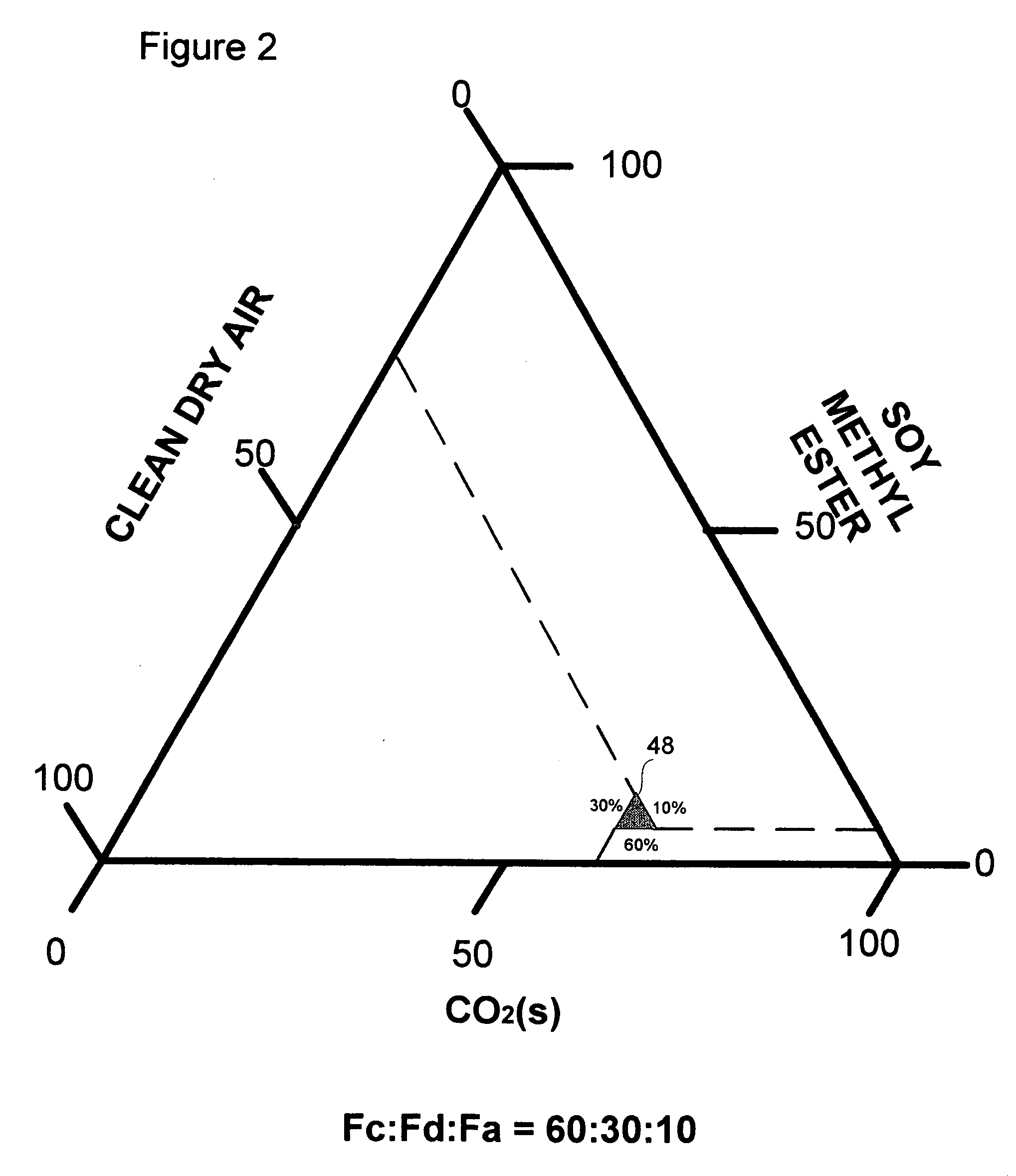Cryogenic fluid composition
a technology of cryogenic fluid and composition, applied in the field of machining processes, can solve the problems of cracking and failure of the entire insert along the cutting edge, abrasion between the cutting insert and the workpiece, and the cutting insert of the tool holder
- Summary
- Abstract
- Description
- Claims
- Application Information
AI Technical Summary
Benefits of technology
Problems solved by technology
Method used
Image
Examples
examples
[0081] Several experiments were designed and performed to compare and contrast the relative performance of the present invention against exemplary conventional cooling and lubrication techniques. In the experiments that follow, it should be noted to those skilled in the art that optimum fluid or spray composition parameters such as spray distance, fluid or spray composition, spray angle, spray delivery means, and optimum number of spray delivery devices for a given machining operation were not optimized. The purpose of the experiments was to gage the performance of the composite sprays herein under approximately similar application conditions and replicated machining operations.
High Speed Precision Grinding
[0082] A machining test was performed to examine the machined surface quality and compare this to conventional flooded coolants. The machining process performed was a rough and finish grinding of a stainless steel-steatite-epoxy article having a steatite portion 224, an epoxy p...
PUM
 Login to View More
Login to View More Abstract
Description
Claims
Application Information
 Login to View More
Login to View More - R&D
- Intellectual Property
- Life Sciences
- Materials
- Tech Scout
- Unparalleled Data Quality
- Higher Quality Content
- 60% Fewer Hallucinations
Browse by: Latest US Patents, China's latest patents, Technical Efficacy Thesaurus, Application Domain, Technology Topic, Popular Technical Reports.
© 2025 PatSnap. All rights reserved.Legal|Privacy policy|Modern Slavery Act Transparency Statement|Sitemap|About US| Contact US: help@patsnap.com



